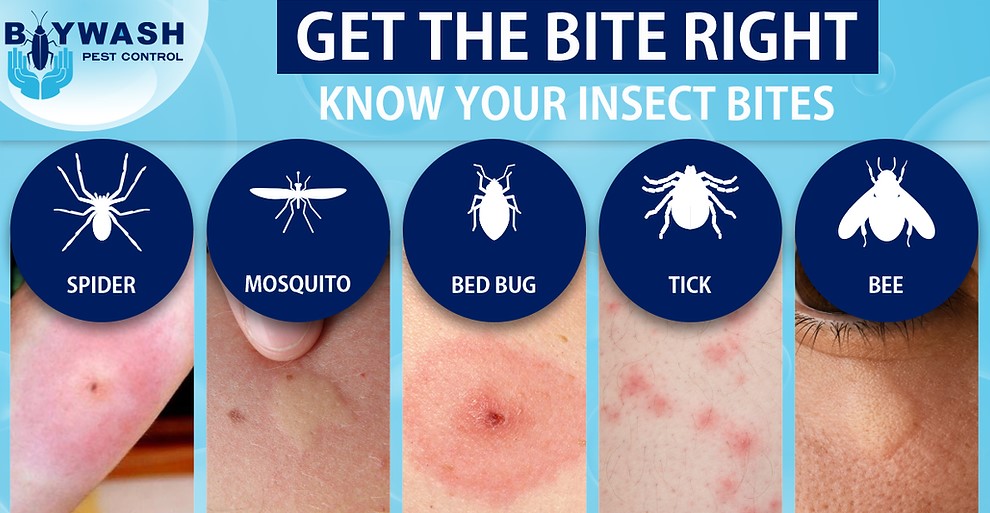BOURSESSENEGAL – Bug bites can be more than just an annoying itch; they can cause discomfort and even health concerns. Whether it’s a mosquito, spider, or flea, knowing how to handle bug bites is essential for your well-being. In this comprehensive guide, we will explore the causes of bug bites, identify common types, discuss symptoms, and offer effective treatment options.
What Causes Bug Bites?
Bug bites occur when an insect or arthropod pierces the skin to feed on blood or inject venom. Various insects can cause bites, including:
- Mosquitoes: These pests feed on blood and can transmit diseases like malaria and Zika virus.
- Fleas: Often found on pets, flea bites can lead to itching and irritation.
- Ticks: These arachnids latch onto skin and can transmit Lyme disease and other illnesses.
- Bed Bugs: These nocturnal pests bite while you sleep, leaving itchy welts on your skin.
- Spiders: Some spider bites can cause serious reactions, depending on the species.
Understanding the specific bug responsible for your bite can help determine the appropriate treatment.
Common Symptoms of Bug Bites
Identifying the symptoms associated with bug bites can aid in timely treatment. Here are some typical signs:
1. Itching and Redness
Most bug bites cause localized itching and redness. The body reacts to the insect’s saliva or venom, leading to inflammation. This response can vary from mild to severe based on individual sensitivity.
2. Swelling
In addition to itching, you may notice swelling around the bite area. This can happen with most insect bites, particularly with mosquitoes and spiders. Swelling may last a few hours to a couple of days.
3. Pain
Some bug bites can be painful, especially those from spiders or ticks. Pain can vary from a slight sting to a sharp, intense feeling.
4. Blisters
In certain cases, bites may cause blisters. This is more common with allergic reactions or bites from specific insects, such as fleas or mosquitoes.
5. Systemic Reactions
In rare cases, individuals may experience systemic reactions to bug bites. Symptoms can include fever, chills, and rash. If you experience these, seek medical attention immediately.
First Aid for Bug Bites
Knowing how to treat bug bites promptly can alleviate discomfort and reduce the risk of complications. Here are some effective first-aid measures:
1. Clean the Area
Start by washing the bite area with soap and water. This step helps prevent infection. Gently pat the skin dry with a clean towel.
2. Apply a Cold Compress
Using a cold compress can reduce swelling and numb the area, providing immediate relief from itching and pain. Wrap ice in a cloth and apply it to the bite for 10-15 minutes.
3. Use Over-the-Counter Remedies
Over-the-counter (OTC) treatments can be beneficial. Antihistamines, like diphenhydramine (Benadryl), can help reduce itching and swelling. Topical creams containing hydrocortisone can also provide relief.
4. Avoid Scratching
While it’s tempting to scratch an itchy bite, avoid doing so. Scratching can lead to infections and worsen the irritation. Keep your nails trimmed and clean to minimize the risk.
When to See a Doctor
In most cases, bug bites resolve on their own with proper care. However, certain situations warrant medical attention:
1. Severe Allergic Reactions
If you experience difficulty breathing, swelling of the face or throat, or rapid heartbeat, seek emergency medical help. These symptoms indicate a severe allergic reaction (anaphylaxis).
2. Signs of Infection
Watch for increasing redness, warmth, or pus at the bite site. These signs suggest an infection, which may require antibiotics.
3. Persistent Symptoms
If symptoms persist for more than a few days or worsen, consult a healthcare professional for evaluation. This could indicate a more serious condition.
Preventing Bug Bites
Prevention is key to avoiding the discomfort associated with bug bites. Here are some effective strategies:
1. Use Insect Repellent
Applying insect repellent containing DEET, picaridin, or oil of lemon eucalyptus can effectively deter bugs. Follow the product instructions for application, especially if spending time outdoors.
2. Wear Protective Clothing
When venturing into areas where bugs are prevalent, wear long sleeves, long pants, and socks. Light-colored clothing can also make it easier to spot bugs.
3. Keep Your Environment Clean
Maintain a tidy home and yard. Regularly dispose of garbage, remove standing water, and keep grass trimmed to minimize bug habitats.
4. Check for Ticks
After spending time outdoors, especially in wooded areas, perform a thorough check for ticks. Remove any ticks promptly and carefully.
Natural Remedies for Bug Bites
Some individuals prefer natural remedies to alleviate the discomfort of bug bites. Here are a few options to consider:
1. Aloe Vera
Aloe vera has soothing properties that can help reduce itching and inflammation. Apply fresh aloe vera gel directly to the bite for relief.
2. Honey
Honey possesses antibacterial and anti-inflammatory properties. Dab a small amount onto the bite to soothe irritation.
3. Baking Soda Paste
Mixing baking soda with water creates a paste that can help neutralize itching. Apply it to the affected area for quick relief.
4. Essential Oils
Certain essential oils, such as lavender or tea tree oil, can provide relief. Dilute with a carrier oil before applying it to the bite area.
Conclusion: Managing Bug Bites Effectively
Understanding bug bites equips you to manage them effectively. By recognizing the symptoms, providing immediate care, and knowing when to seek medical attention, you can alleviate discomfort and promote healing. Prevention strategies, combined with natural remedies, further enhance your ability to enjoy outdoor activities without the worry of bug bites. Stay informed, stay prepared, and enjoy a bite-free experience!
REFERENCE : receh



